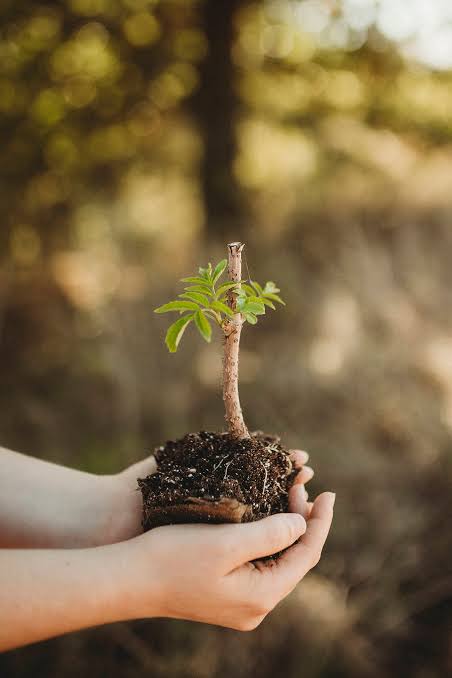If you’re dreaming of a garden that’s both beautiful and beneficial, the elderberry plant is your new best friend! Known for its clusters of tiny, dark purple berries and lovely cream-colored flowers, elderberries are packed with antioxidants and have been used for centuries in syrups, teas, and natural remedies.But how do you actually grow them? Don’t worry — this guide will show you simple tricks to elderberry plant how to grow successfully, even if you’re new to gardening. Whether you live in the United States, Canada, or the United Kingdom, these easy, practical tips will help you grow thriving elderberry bushes in your own backyard! 🌱🍇 1. Why You’ll Love Growing Elderberry PlantsBefore we dig into the “how,” let’s explore the “why.” Elderberries aren’t just pretty — they’re powerful!🌿 Health Benefits: Elderberries are rich in vitamin C and antioxidants that help support the immune system.🌸 Beautiful Blooms: In spring and early summer, elderberry bushes burst with fragrant white flowers that attract bees and butterflies.🍇 Versatile Harvest: Use the berries for jams, syrups, wines, or wellness tonics.🌳 Low Maintenance: Once established, elderberries are easy to care for and very productive.If you’re looking for a plant that gives back year after year, growing elderberries is a smart, sustainable choice.🌤️ 2. The Best Time and Place to Plant ElderberriesWhen to Plant:The ideal time to plant elderberries is in early spring or fall, when the soil is cool and moist.Where to Plant:Elderberries love sunlight — they thrive in full sun but can tolerate partial shade.They prefer moist, well-draining soil that’s slightly acidic (pH 5.5–6.5).💡 Pro Tip: Avoid dry, sandy spots or areas with standing water. Elderberries like moisture, but not soggy roots!🌱 3. Simple Steps to Plant ElderberriesFollow these easy steps for how to grow elderberry plants successfully:Step 1: Prepare the SoilElderberries grow best in fertile, loose soil. Before planting, mix in compost or aged manure to boost nutrients and improve drainage.Step 2: Choose Your PlantsYou can start elderberries from:Bare-root plants (common in nurseries), orCuttings from a mature bush.Choose at least two different varieties for better pollination and higher fruit yields.Step 3: PlantingDig a hole twice as wide and deep as the root ball.Set the plant so that the root crown (where roots meet the stem) is level with the soil.Backfill the hole and press gently to remove air pockets.Water deeply right after planting.🌿 Spacing: Plant elderberries about 6–8 feet apart to give them plenty of room to grow and spread.💧 4. Caring for Elderberry Plants: Watering and FeedingWateringElderberries love consistent moisture. Water weekly during dry spells, giving them about 1–2 inches of water per week.Mulching around the base with straw or wood chips helps retain soil moisture and prevent weeds.FeedingFeed your elderberries once each spring with a balanced organic fertilizer or compost. Too much nitrogen can lead to leafy growth but fewer berries, so go easy!✂️ 5. Pruning for SuccessPruning is one of the simple tricks to elderberry plant how to grow successfully — it keeps your plants healthy and productive.🌸 When to Prune:Prune in late winter or early spring before new growth begins.🌿 How to Prune:Remove dead, weak, or crossing branches.Cut back older canes (over 3 years old) to encourage new shoots.Keep about 6–8 strong, healthy canes per bush.Regular pruning helps sunlight reach all parts of the plant and promotes better fruiting.🐝 6. Encourage Pollination for Bigger HarvestsElderberries rely on pollinators — bees, butterflies, and other insects — to set fruit.To boost pollination naturally:🌼 Plant flowers like lavender, coneflowers, or daisies nearby.🌿 Avoid chemical pesticides that harm beneficial insects.🌸 Grow at least two elderberry varieties for cross-pollination.The more pollinators you attract, the more berries you’ll harvest! 🍇🌾 7. Harvesting Elderberries Like a ProYou’ll know your elderberries are ready when the clusters turn deep purple or black and the berries feel soft to the touch.How to Harvest:Cut entire clusters using garden shears.Avoid eating raw berries — they’re best cooked into syrups, jams, or pies to remove natural toxins.💡 Pro Tip: Freeze the clusters before removing the berries — they pop off much more easily!🌿 8. Common Mistakes to AvoidEven easy plants like elderberries can struggle if you overlook a few details. Here’s what to watch for:❌ Planting in dry soil – Elderberries love moisture and won’t thrive in drought-like conditions.❌ Skipping pruning – Overgrown bushes produce fewer berries.❌ Ignoring pollination – You’ll get little fruit if only one plant blooms.❌ Over-fertilizing – Too much nitrogen leads to leafy plants with no berries.Stick to these tips, and your elderberry garden will flourish!🌸 9. Bonus: Creative Elderberry Garden IdeasElderberries are not just useful — they’re decorative, too! Try these garden design ideas:🌿 Natural Hedge: Plant a row of elderberries as a privacy screen or windbreak.🍇 Wildlife Garden: Elderberries attract birds, bees, and butterflies.🌸 Cottage Garden Corner: Combine with lavender, yarrow, or roses for a colorful, rustic look.🌱 Container Garden: Grow dwarf elderberry varieties in large pots on patios or balconies.Conclusion: Grow Smarter with Elderberries! 🌿🍇Growing elderberries is easier than most people think — and incredibly rewarding! By following these simple tricks to elderberry plant how to grow successfully, you’ll enjoy a garden full of beauty, health benefits, and delicious harvests for years to come.From soil prep to pruning, every step brings you closer to enjoying homegrown elderberries straight from your own garden. So don’t wait — grab a few plants, get your hands dirty, and watch nature reward you with stunning blossoms and bountiful berries!🌸 Grow smarter with elderberries — your garden will thank you! 🌿

